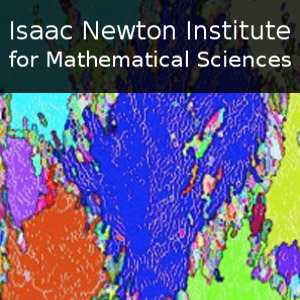New insight from CryoSat-2 sea ice thickness for sea ice modelling
23 mins 41 secs,
343.85 MB,
MPEG-4 Video
640x360,
29.97 fps,
44100 Hz,
1.93 Mbits/sec
Share this media item:
Embed this media item:
Embed this media item:
About this item

| Description: |
Schroeder, D
Friday 15th September 2017 - 17:00 to 17:20 |
|---|
| Created: | 2017-09-18 16:13 |
|---|---|
| Collection: | Mathematics of sea ice phenomena |
| Publisher: | Isaac Newton Institute |
| Copyright: | Schroeder, D |
| Language: | eng (English) |
| Distribution: |
World
|
| Explicit content: | No |
| Aspect Ratio: | 16:9 |
| Screencast: | No |
| Bumper: | UCS Default |
| Trailer: | UCS Default |
| Abstract: | Estimates of Arctic sea ice thickness are available from the CryoSat-2 radar altimetry mission during the ice growth seasons since 2010. We derive the sub-grid scale ice thickness distribution (ITD) with respect to 5 ice thickness categories used e.g. in the sea ice component CICE of HadGEM3 climate simulations: (1) ice thickness h < 60 cm, (2) 60 cm < h < 1.4 m, (3) 1.4 m < h < 2.4m, (4) 2.4 m < h < 3.6 m, (5) h > 3.6 m. This allows us both to verify the simulated cycle of ice thickness and to initialize the ITD in stand-alone simulations with the sea ice model CICE. We find that a default CICE simulation strongly underestimates the ice thickness, in spite of doing a reasonable job regarding the inter-annual variability of summer sea ice extent. We can identity the underestimation of winter ice growth being responsible and show that using ice and snow conductivity values on the upper end of the observed range (2.63 and 0.5 W/m/K) makes sea ice growth more realistic and generally improves the model simulation. Sensitivity studies provide insight on the role of ice strength, momentum and heat turbulent fluxes on the annual cycle of sea ice thickness. We show that the width of ITD plays an important role for the summer lead fraction and basal ice melt. Furthermore, a major discrepancy is revealed regarding the annual cycle of sub-grid scale thick sea ice (category 5). According to Cryosat-2 there is a strong formation of thick ice during winter, but hardly any thick ice survives the summer. CICE simulations only show a weak seasonal cycle, indicating that both the formation and the melting of thick is underestimated. Coupled simulations with the ocean – sea ice model NEMO-CICE confirm our results highlighting that sea ice physics and parameters are responsible for differences with Cryosat estimates and improvements are required. |
|---|---|
Available Formats
| Format | Quality | Bitrate | Size | |||
|---|---|---|---|---|---|---|
| MPEG-4 Video * | 640x360 | 1.93 Mbits/sec | 343.85 MB | View | Download | |
| WebM | 640x360 | 746.48 kbits/sec | 129.58 MB | View | Download | |
| iPod Video | 480x270 | 522.26 kbits/sec | 90.59 MB | View | Download | |
| MP3 | 44100 Hz | 249.84 kbits/sec | 43.37 MB | Listen | Download | |
| Auto | (Allows browser to choose a format it supports) | |||||

